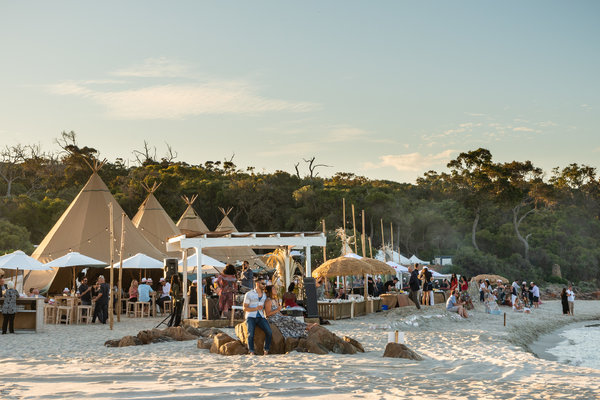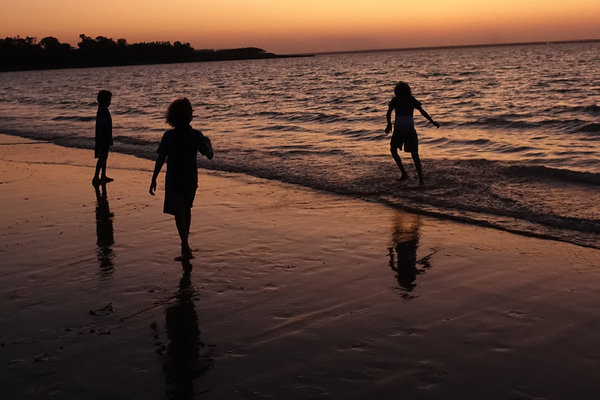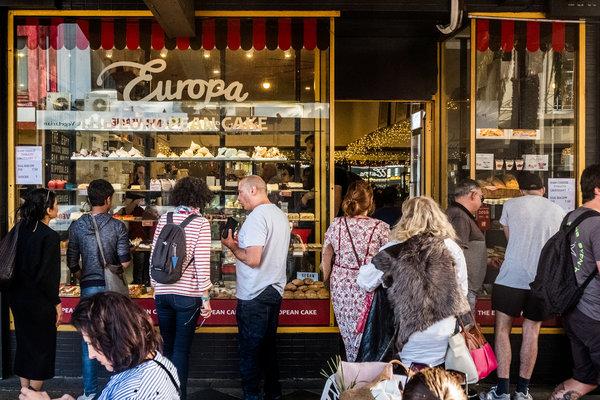Pity Melbourne: After seven years of topping the Economist Intelligence Unit’s most livable city rankings, it was finally displaced last year by another coffee-loving city, Vienna. Despite being nudged down a notch to No. 2, Melburnians aren’t too worried. Though the city is currently grappling with issues related to being such a popular place to live — rapid growth, high property prices, congested roads — the city in the southeastern part of Australia continues to be the country’s capital for all things cultural. There are more festivals than can fit on a calendar; a thriving, boundary-pushing restaurant scene; and a commitment to the arts that will only deepen with the National Gallery of Victoria’s plans to build the largest contemporary art gallery in Australia by 2025. Melbourne may have lost its crown, but it still has its spacious Victorian-era parks, flat whites and famously sunny way of life.
36 Hours in Melbourne
Friday
1) 4 p.m. Beach life
Situated on calm Port Phillip Bay, Melbourne doesn’t have Sydney’s surf culture, but the seaside suburb of St. Kilda comes close: palm-fringed beaches, daredevil kite-surfers and (usually) plenty of sun. Start with a stroll past the charming, old-school cake shops on Acland Street — the 85-year-old Monarch Cakes makes a chocolate kugelhopf with a recipe dating back to the cafe’s early days, while Europa Cake Shop serves up a fabulous poppy seed cheesecake and flourless orange cake. Afterward, head to the beach for a dip in the bay, or if the weather isn’t cooperative, pop into Pontoon, a sleek bar with an outdoor patio just steps from the sand, and sip a pint of Melbourne-brewed Stomping Ground pale ale (14 Australian dollars, or about $10) while watching the tattooed, bronzed beachgoers saunter by.
2) 6:30 p.m. Everything on the barbie
The smell of smoke and crackle of firewood hits you the second you enter Matilda, opened last June by Scott Pickett, one of Melbourne’s most acclaimed chefs. Nearly everything at Matilda is cooked over fire or charcoal — the open kitchen, set right next to the front door, is equipped with an offset smoker, wood-fired oven, rotisserie and two fire pits, but there’s nary a gas stove in sight. And this wood-fired focus pairs well with a menu highlighting native Australian ingredients, from the grilled baby barramundi topped with a grenobloise made from salt bush, desert lime and lemon myrtle (44 dollars) to the grilled 21-day-aged Tasmanian porterhouse with a macadamia romesco (49 dollars). And though the Pink Lady apple tarte Tatin (22 dollars) is baked in a conventional oven, there is a fire element here, too — a gentle smoking of the vanilla ice cream on the side.


3) 9 p.m. Bayside beats
Built in 1878, the opulent, bayfront Hotel Esplanade was the epicenter of society life in St. Kilda’s early days. The philanthropist Alfred Felton, a major benefactor of the National Gallery of Victoria, lived here for over a decade until his death in 1904, and throughout the 20th century, the hotel was a premier music venue, hosting everything from jazz and big band performances to disco nights. After falling into disrepair, the Esplanade (called “the Espy” for short) underwent an 18-month renovation and reopened in November to play music once again. There are now three stages in the sprawling complex — including one in the hotel’s ballroom, the Gershwin Room — and a full slate of events every weekend, ranging from up-and-coming Australian bands to more conceptual performance art shows. Upcoming shows include Sun Kil Moon (May 15) and Sydney singer Ruby Fields (May 28 to 30).

Europa is one of the old-school cake shops along Acland Street.CreditAsanka Brendon Ratnayake for The New York Times
Saturday
4) 8:30 a.m. Beyond flat whites
Melbourne is an early-rising town, which is not surprising for a city that prides itself on its coffee. And when it comes to coffee, Seven Seeds, a roaster and cafe in a converted warehouse space just north of downtown, is brewing some of the best in the city. The cafe sources its beans directly from growers on scouting trips to places like Ethiopia, Guatemala and the Bolivian Andes and recently started publishing the “farmgate price” paid to growers in an aim for greater transparency. The filtered cold brews (5 dollars) are fantastic, served with cocktail-style blocks of ice, and the breakfast menu features standouts like crab scrambled eggs topped with a Sichuan pepper caramel sauce and cilantro and mint salad (24 dollars). Public tasting sessions are also frequently held on Saturday mornings to demonstrate the baristas’ brewing techniques.
5) 11 a.m. Market day
Known simply as the “Queen Vic,” the Queen Victoria Market is not only Melbourne’s largest open-air market, it’s also one of the oldest, with a more than 140-year history that earned it a place on Australia’s National Heritage List last year. The market is packed no matter what time you visit, so conserve your energy and focus on the colorful meat, fish and dairy halls. The smorgasbord on offer here includes everything from lamb, mint and rosemary sausages to Australian bush herbs, macadamia dukkah and all manner of local cheeses and sourdough breads. Snack here, or order a bowl of freshly steamed mussels (from 11 dollars) outside at The Mussel Pot, a market favorite. (Tip: If you’re in town midweek, check out the night market on Wednesday evenings during both summer and winter.)
6) 1 p.m. History lesson
As far as origin stories go, few are as slickly produced as the tale of Melbourne’s beginnings at the Melbourne Museum (adults 15 dollars, children free). The extensive, interactive exhibition first takes visitors through the history of the original Aboriginal inhabitants of the region and details the devastating impact of the arrival of Europeans in 1835: Their numbers were decimated by disease, and their lands stolen. The story then continues through Melbourne’s early days as a gunslinging gold rush town and tracks its phenomenal growth in more recent years. Two other highlights: the Wild exhibition, which details how a menagerie of more than 600 animals has been impacted by climate change; and the gorgeous Forest Gallery, a canopied woodland of tree ferns, gum trees and other native plants, populated by the birds and fish that have always called this part of Australia home.
7) 3 p.m. Design district
The once-working class neighborhood Fitzroy is now the go-to spot in Melbourne for local designers. There are well-known Australian fashion labels to be found here, such as Kloke and Handsom, as well as Mud Australia, a maker of brightly colored porcelain. But independent designers have a space, too. Uscha stocks Japanese-inspired ceramics, woodwork and leather items made by local artists, while Third Drawer Down partners with established and emerging artists on exclusive designs for everyday items like mugs, tote bags and homewares. At Design a Space, more than 80 local clothing designers rent racks to display their creations, keeping 90 percent of profits from sales. And the weekly Rose St. Artists’ Market features more artists, designers, bakers and organic farmers, peddling their wares in a former junkyard.
8) 6 p.m. Approachable wines
As Melbourne’s eating and dining scene has matured in recent years, one chef in particular has been at the forefront: Andrew McConnell, who now counts a stable of nine venues to his name. Opened in late 2015, the wine bar Marion has been one of the most popular because of its eclectic wine menu — categories range from skin-contact whites to “Everything in Moderation, including Moderation” reds (mainly easy-drinking reds) — as well as the delicious, well-priced bar food. The chef’s selection (65 dollars a person) offers a sampling of the greatest hits, among them the Hiramasa kingfish topped with preserved orange peel, pickled fennel, Espelette pepper, fennel pollen and flowers; and grilled cuttlefish with burned spring onion dressing, radish, fennel and fried curry leaves. A curious side note: a few window seats overlook the brick alley known as Deadman’s Lane, so named for the bodies that ended up here — either drunk or dead — during Fitzroy’s gangland days in the early 1900s.
9) 9 p.m. Australian spirit
Few people know the ins and outs of Australia’s booming craft distilling scene like Seb Costello, founder of the Fitzroy cocktail bar Bad Frankie. Named after the former governor of Van Diemen’s Land (now Tasmania), Sir John Franklin, who banned small-batch distilling on the island in the early 19th century, the bar celebrates the best of modern Australian spirit-making, with a menu spanning some 500 local gins, whiskies, vodkas and even more obscure liqueurs like a South Australian rakia and Tasmanian absinthes. Mr. Costello’s love of Australia carries over to the bar menu of jaffles, an Australian toasted sandwich snack, as well as the wallpaper featuring photographs of vintage Australiana, including a few from his own family albums.
Sunday
10) 9 a.m. Pedal power
Though Melbourne is a sprawling urban center, it’s easier than you think to get a taste of the Australian bushland on the bucolic Main Yarra Trail, which winds for more than 20 miles along the tranquil Yarra River. Rent a bike that can handle very moderate hills; Freddy’s Bike Tours & Rentals has road bikes for 30 Australian dollars per half day. Then, starting in the city center, pedal past the 19th-century boathouses in Alexandra Gardens (still in use by weekend rowers) and follow the trail as it loops through South Yarra, finishing at the Abbotsford Convent, now a creative space with artist studios, cafes and a monthly farmers market. The ride is well-marked and mostly flat, with plenty of shade provided by gum trees and lovely views of the river. If you’re lucky, you may even spot a platypus frolicking in the Yarra.
11) 11 a.m. Grazing meal
After your ride, spend an afternoon at the farm. Next to the convent, the Collingwood Children’s Farm (adults 12 dollars, children 7 dollars) is a 40-year-old nonprofit institution that’s home to a menagerie of animals (Berkshire pigs, Anglo Nubian goats, to mention a few) on just under 10 acres of pastureland. Children can get up close and personal with the animals by joining farmers on the twice-daily feed walks, brushing the cows or petting the resident guinea pigs. Afterward, sit down to a leisurely breakfast at the Farm Café, a breezy, flower-filled restaurant with a farm-to-table menu featuring grilled South Australian sardines with ricotta, olives and heirloom tomatoes on toast (21 dollars) and slow-cooked beef meatballs with house-made labne and tabbouleh (21 dollars). The view of the cows and chickens says it all about Melbourne — this really is the good life.
Lodging
Once a criminal haunt in the 1930s, Fitzroy is now one of the city’s most fashionable corners. It is also conveniently located: Several tram lines offer easy access to the central business district, South Melbourne and St. Kilda. There are plenty of converted loft apartments and former worker cottages available on Airbnb for around 100 to 150 Australian dollars a night.
Is it a hotel or a gallery, or both? The Olsen Hotel (637-641 Chapel Street, South Yarra, artserieshotels.com.au/olsen/), a 224-room property in South Yarra, is dedicated to the 91-year-old landscape artist, John Olsen, one of Australia’s most accomplished painters, with his works scattered throughout. Doubles from 185 dollars a night.
Set above Matilda, United Places Botanic Gardens (157 Domain Road, South Yarra; unitedplaces.com.au) is a rarity in Melbourne — an upscale, 12-suite boutique hotel with designer touches, including custom-made brass lighting, locally made ceramics and artworks, and furnishings by the Spanish designer Patricia Urquiola. Doubles from 650 dollars a night.
Follow NY Times Travel on Twitter, Instagram and Facebook. Get weekly updates from our Travel Dispatch newsletter, with tips on traveling smarter, destination coverage and photos from all over the world.






